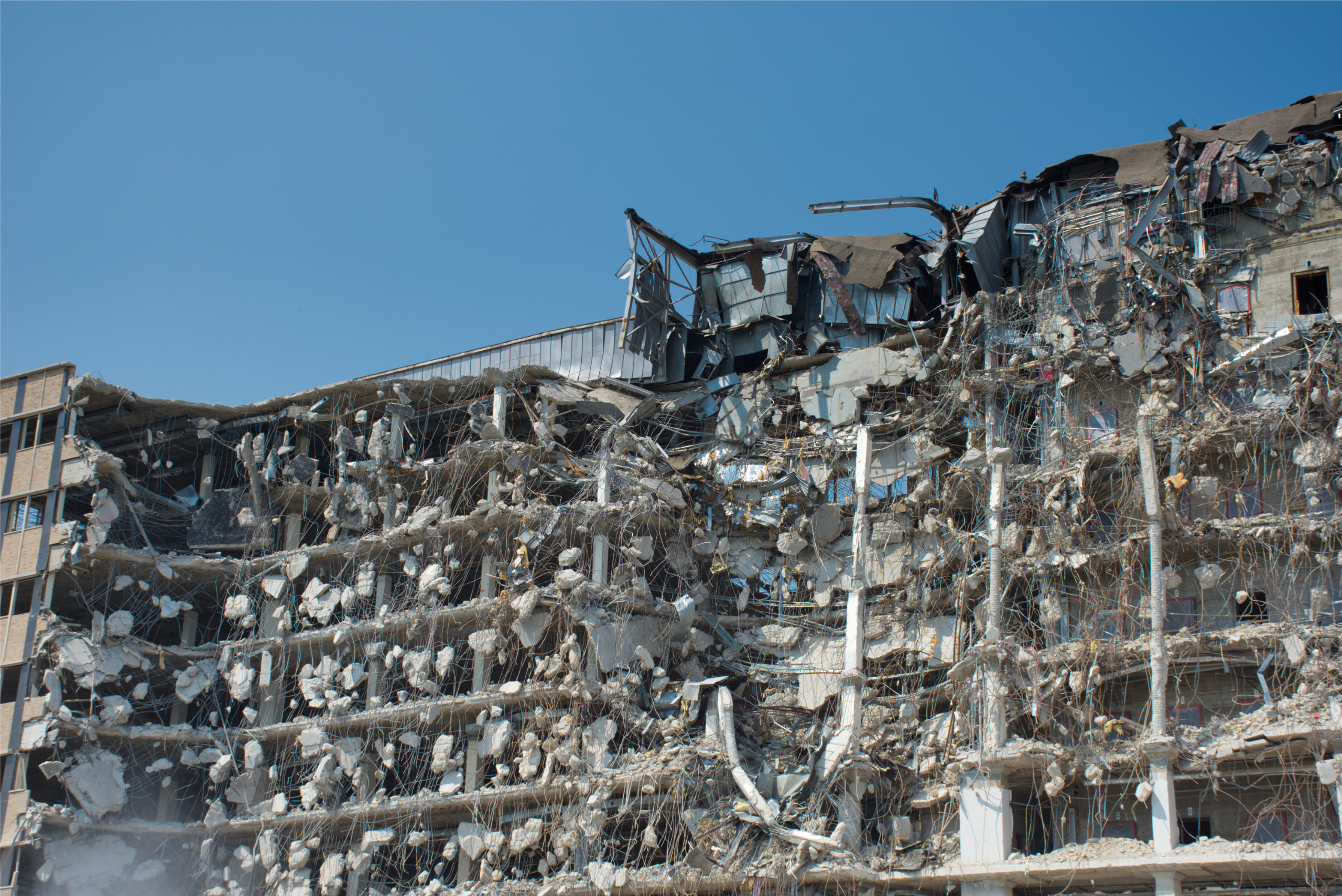Tech Advancements for Collateral Damage Reduction
June 20, 2023

Collateral damage can be defined as unintentional harm or destruction of civilian lives. This also includes infrastructure during military operations, which has long been a concern in the conduct of warfare.
As modern warfare evolves, the importance of reducing collateral damage has become increasingly apparent. In recent years, the US military is making strides in developing technologies aimed at collateral damage reduction.
We will take a look at some of these technological advancements and the impact on reducing this unfortunate inevitable consequence.
Precision-Guided Munitions
Precision-guided munitions (PGMs) are advanced weapon systems designed to accurately strike a specific target with minimal collateral damage. These munitions use guidance systems, such as:
- Global Positioning Systems (GPS)
- Laser guidance
- Electro-optical/infrared (EO/IR) guidance
This technology enhances the accuracy of the weapons. As a result, they minimize the chances of hitting unintended targets.
PGMs have revolutionized modern warfare. They enable military forces to engage targets with a high degree of precision. They reduce the risk to civilian populations and infrastructure.
The development of precision-guided munitions dates back to World War II with the introduction of radio-controlled glide bombs. However, it was during the Vietnam War that PGMs gained widespread recognition. Particularly with the advent of laser-guided bombs.
Technological advancements in guidance systems have since led to the development of various types of PGMs. The proliferation of PGMs in modern military arsenals has a significant impact on warfare strategies and tactics. Forces can now conduct precision strikes with increased confidence and minimal risk of collateral damage.
Types of Precision-Guided Munitions
There are several types of precision-guided munitions. They each use different guidance systems and technologies to achieve increased accuracy and reduced collateral damage.
Some of the main types include:
Laser-Guided Bombs (LGBs)
These bombs use semi-active laser guidance to home in on a target illuminated by a laser designator. Either from the aircraft dropping the bomb or from a separate platform, such as a ground-based unit or another aircraft.
The laser energy reflected off the target is detected by the bomb’s seeker. Allowing it to adjust its trajectory to strike the designated target accurately.
GPS-Guided Munitions
These munitions rely on the Global Positioning System (GPS) for guidance. This enables them to strike targets with high accuracy based on their pre-programmed coordinates.
The GPS receiver within the munition calculates its position and compares it to the target’s coordinates. GPS-guided munitions can be less susceptible to weather and visibility conditions compared to laser-guided bombs, as they do not rely on a direct line of sight.
Electro-Optical/Infrared-Guided Munitions (EO/IR)
These munitions use a combination of imaging infrared (IIR) and electro-optical (EO) sensors to track and engage targets.
EO/IR-guided munitions are manually guided by an operator. They steer the weapon toward the target using a video feed from the onboard sensor.
Operators can also program them to follow a specific target autonomously. They base this on the target’s unique heat signature or visual characteristics.
Joint Direct Attack Munition (JDAM)
JDAM is a tail kit attached to unguided bombs. The kit converts the bombs into precision-guided weapons. The kit includes a
- GPS receiver
- Inertial navigation system (INS)
- Tail fins for steering the bomb
This combination of GPS and INS guidance allows JDAM to support high accuracy even in challenging conditions. These challenging conditions can include GPS signal jamming or interference.
Impact on Reducing Collateral Damage
Precision-guided munitions (PGMs) have had a significant impact on reducing collateral damage in modern warfare. By increasing the accuracy and effectiveness of airstrikes, these advanced weapon systems have helped minimize unintended harm to civilian lives and infrastructure.
Some key ways PGMs contribute to reducing collateral damage include:
- Increased accuracy
- Target discrimination
- Smaller blast radius
- Fewer munitions needed
- Real-time adjustments
Unmanned Aerial Systems (UAS)
Unmanned aerial systems (UAS) have become an integral part of modern military operations. They are also known as drones. These systems consist of
- An unmanned aerial vehicle (UAV)
- A ground control station
- A communication link between the two
UAS offer many advantages over a traditional manned plane, including:
- Longer endurance
- Lower risk to human operators
- Ability to perform tasks in hazardous or inaccessible environments
UAS military applications are diverse, ranging from:
- Intelligence
- Surveillance
- Reconnaissance (ISR) missions to combat and support roles
Their versatility, joint with rapid advancements in drone technology, has led to a significant increase in their deployment across various branches of the military. It is transforming the way warfare is conducted in the 21st century.
Surveillance and Reconnaissance Capabilities
One of the primary roles of UAS in military operations is to give enhanced surveillance and reconnaissance capabilities.
UAVs can gather crucial intelligence on:
- Enemy positions
- Movements
- Activities
They can do this without putting human lives at risk. Their ability to loiter over an area for extended periods allows for persistent surveillance. This can be invaluable for tracking high-value targets or monitoring ongoing situations.
UAS can relay real-time data and high-resolution imagery to ground control stations and other military assets. Enabling prompt decision-making and more effective coordination between different units.
These capabilities have made UAS indispensable tools in modern ISR missions. Providing military forces with greater situational awareness and a more comprehensive understanding of the battlefield.
Precision Strikes with Reduced Collateral Damage
In addition to their surveillance and reconnaissance roles, UAS have also been employed for precision strike missions. This is especially useful in counterterrorism and counterinsurgency operations.
Armed with precision-guided munitions, UAVs can engage targets with high accuracy. They can cut the risk of collateral damage to civilian lives and infrastructure.
The real-time intelligence provided by UAVs allows for more precise target identification and assessment. Ensuring that only legitimate targets are engaged.
The remote operation of UAS eliminates the risk to human pilots. This allows for a more calculated and patient approach to strike missions.
As a result, UAS have become increasingly important assets for conducting precision strikes. It significantly reduces collateral damage and enhances the effectiveness of military operations.
Non-Lethal Weapons
Non-lethal weapons are designed to:
- Incapacitate
- Deter
- Temporarily disable targets
All without causing significant harm or permanent injury. These weapons give military and law enforcement personnel with alternative means of addressing various situations. This is especially helpful in scenarios where lethal force may be undesirable or inappropriate.
The use of non-lethal weapons can have a large impact on collateral damage reduction. They offer a more controlled and proportionate response to threats. This minimizes the risk of harm to civilians and damage to infrastructure.
Some of the primary categories of non-lethal weapons include:
- Acoustic devices
- Directed energy weapons
- Chemical agents
- Electromagnetic weapons
The use of non-lethal weapons can contribute to collateral damage reduction by providing military personnel with alternative means to address threats while minimizing harm to civilians and property.
By employing non-lethal force, these weapons allow for a more proportionate and controlled response. Reducing the likelihood of unnecessary harm. It preserves the safety of non-combatants in conflict zones and other sensitive situations.
Training and Simulation Technologies
Training and simulation technologies have emerged as crucial tools in preparing military personnel for the complexities of modern warfare. Directly contributing to the reduction of collateral damage.
Virtual and augmented reality systems enable realistic and immersive training experiences that closely mimic real-world scenarios. This allows military personnel to develop and refine their skills in a controlled and safe environment. Improving their decision-making abilities and tactical understanding without the risks associated with live training exercises.
One of the key benefits of using training and simulation technologies is the opportunity for military personnel to practice and perfect their use of:
- Precision-guided munitions
- Unmanned aerial systems
- Non-lethal weapons
Individuals can gain skills in handling these advanced tools. This enhances their ability to reduce collateral damage during real operations.
These technologies can simulate the consequences of different actions. As a result, they give immediate feedback on the potential impact on civilian lives and infrastructure. This helps military personnel to better understand the implications of their decisions and adapt their strategies.
In addition to honing technical skills, training and simulation technologies can also reinforce the importance of adhering to the rules of engagement and international humanitarian law. They expose military personnel to realistic scenarios that involve complex ethical dilemmas. These simulations can promote critical thinking and foster a greater awareness of the moral and legal aspects of warfare.
The integration of advanced training and simulation technologies into military preparation plays a vital role in reducing collateral damage by improving the:
- Overall competence
- Situational awareness
- Decision-making capabilities
Explore the Technological Advancements in Collateral Damage Reduction
Technological advancements play a crucial role in collateral damage reduction. The above technologies each contribute to minimizing unintentional harm to civilian lives and infrastructure. They enhance the accuracy and effectiveness of military actions. These advancements improve the overall conduct of military operations. They also underscore the importance of adhering to ethical and legal principles.
NSTXL is raising the bar with a unique approach. We bolster innovation by combining government acquisition services and commercial best practices. Reigniting America’s competitive edge is vital to national security. NSTXL is ready to help, every step of the way.
If you are interested in pursuing upcoming opportunities with the federal government, NSTXL can help you get started.





